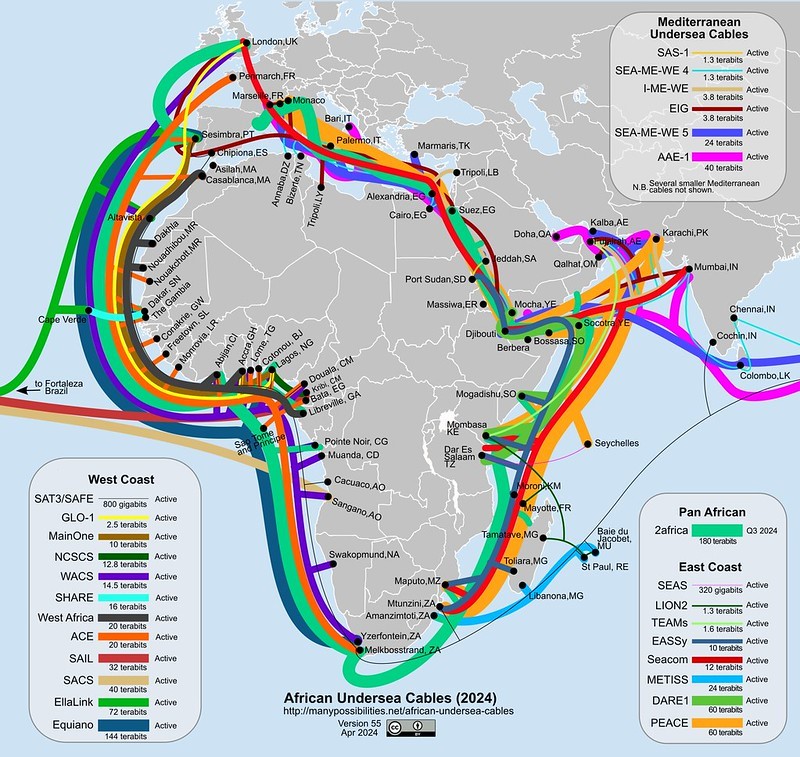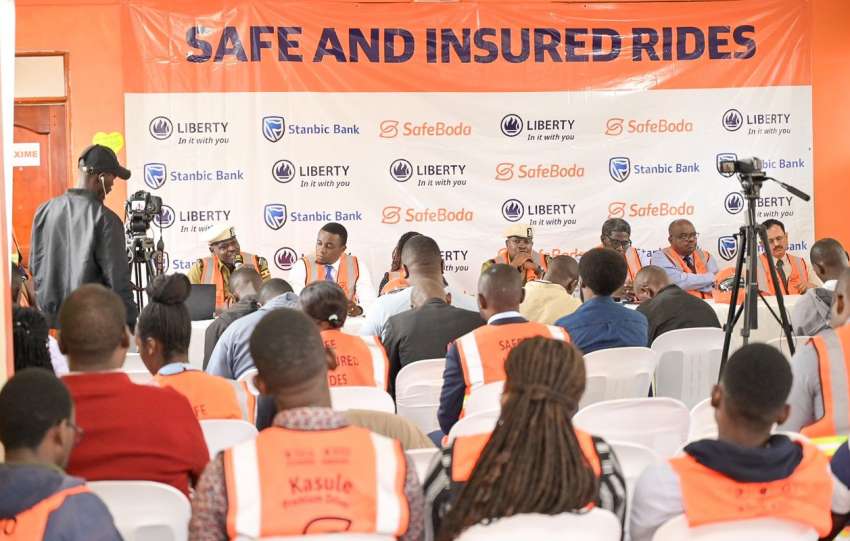The past three months have witnessed several submarine cable interruptions across the African continent, resulting degradation the Internet experience of users in multiple countries at different times during this period. Submarine cables are responsible for connecting Africa to the rest of the world using high speed fiber optic infrastructure.
As countries continue to roll out fibre optic infrastructure further into the hinterlands and last mile access to customers, the access to the global Internet largely depends on submarine cables. We carry over 90% of the Internet traffic to and from Africa via submarine cable systems. As more users in Africa adopt the Internet, together with the development of carrier-neutral data centres and Internet exchange points, it is projected that the continent’s traffic demands will grow at a rate of 44% CAGR by 2030.

While South Africa dominates in data centre real estate and Internet exchange point traffic, there has been been similarly significant activity in Uganda, Kenya, Mozambique, Ghana and Nigeria, as African Internet users demand lower latency to the services they traditionally access, making the case for content providers to extend their delivery networks closer their eyeballs.
The countries that make up the East African Regional Block – Uganda, Kenya, Tanzania, Rwanda, South Sudan, Ethiopia, Burundi, Somalia and Eastern Democratic Republic Congo – are heavily reliant on the various Mombasa and Dar Es Salaam submarine cable landing stations, which are our breakout points for the terrestrial fibre optic networks that carry traffic to and from the coasts.
The East African region is currently served by eight submarine cable systems. But with the older systems beginning to approach their commercial end-of-life window, it is not possible to activate additional capacity to help mitigate the ongoing cable cuts, which then results in a significant reduction in the quality of service Internet users of the region experience.

The latest cable fault occurred on the 12th of May, 2024, where both the EASSy and SEACOM cables were cut just off the east coast of South Africa, near Mtunzini. This incident has severely impacted East Africa and Mozambique, as a large amount of content that is accessed by these regions resides in South Africa. With both cables cut at the locations they are, East Africa and Mozambique has, effectively, been disconnected from South Africa. While there may be some terrestrial (land-based) connectivity providing an alternate method to stay connected to the Internet, it is of low capacity and highly unreliable.
At present, the Leon Thevenin repair vessel has been mobilized by EASSy toward the fault location. The vessel set sail from Cape Town on the 14th of May, 2024, and is set to arrive at the site of the problem by 18th of May, 2024.
There is currently no indication on when the SEACOM cable will be repaired.
Prior to this outage, Africa has experienced the following interruptions as well:
- AAE-1, EIG and SEACOM on the 24th of February, 2024. The fault was caused by the anchor of the Rubymar cargo ship which was damaged by a missile. Due to ongoing political challenges around the Red Sea, repairs have been delayed for several months. Currently, the Yemeni government have approved repairs to EIG and SEACOM. However, approval to repair AAE-1 has not been granted due to a dispute over the split political control of TeleYemen, Yemen’s sole telecommunications service provider, and a consortium member of AAE-1.
- ACE, MainOne, SAT-3 and WACS on the 14th of March, 2024. The fault was caused by an undersea landslide. All cables have since been successfully repaired over the past five weeks.
- SAFE on 25th April, 2024. The fault was caused by an abnormal electrical condition affecting two branching units between South Africa and Mauritius. Full service was successfully restored the following day after the western segment of the system was powered down, and powered up again.
What these outages clearly outline is that despite a spate of growth in submarine cables coming to Africa in the past fifteen years, the continent still has a very long way to go to enhance redundancy alongside increasing bandwidth. It is not enough to have newer cables replacing older ones as traffic demands grow and technologies improve, but to also have as many alternatives as is commercially feasible to avoid significant service interruptions, or worse, a total continent-wide Internet blackout.
2Africa, the largest submarine cable in the world to ever be conceived and built, has been delayed for some time now, for several reasons. Its availability would have mitigated some or all the faults the other cables experienced since February of this year. But since some of the older cables are nearing their end-of-life window, more cables will be required to provide protection against an outage of the newer ones – mainly 2Africa, Equiano, and PEACE.
This article is co-produced by Mark Tinka from TransmissionCo and James Byaruhanga Managing Director, Roke Cloud and Chief Commercial Officer, Roke Telkom.
About Guide2Uganda
Guide2Uganda (www.guide2uganda.ug) is the most comprehensive source of travel information about Uganda that exists on the web, with more content on its cities & towns, accommodation, attractions, events, museums and galleries than any other online guide that currently exists for Uganda; as well as being a dynamic travel news and events driven site with fresh content added daily.
According to WeFollow & Peer Index (that measure online influence), we are among the most influential online media organizations in Uganda. Guide2Uganda was also awarded ‘’Best Destination Website in Uganda’’ by Jumia Travel Uganda in the 2018 Africa Travel Awards.
Share your events, travel stories & photos with the world via email: info@guide2uganda.ug




